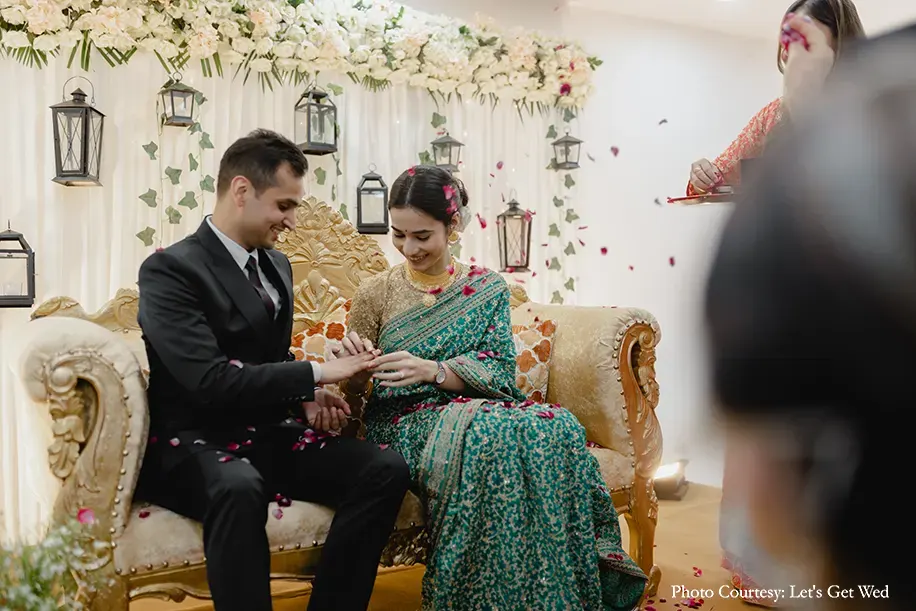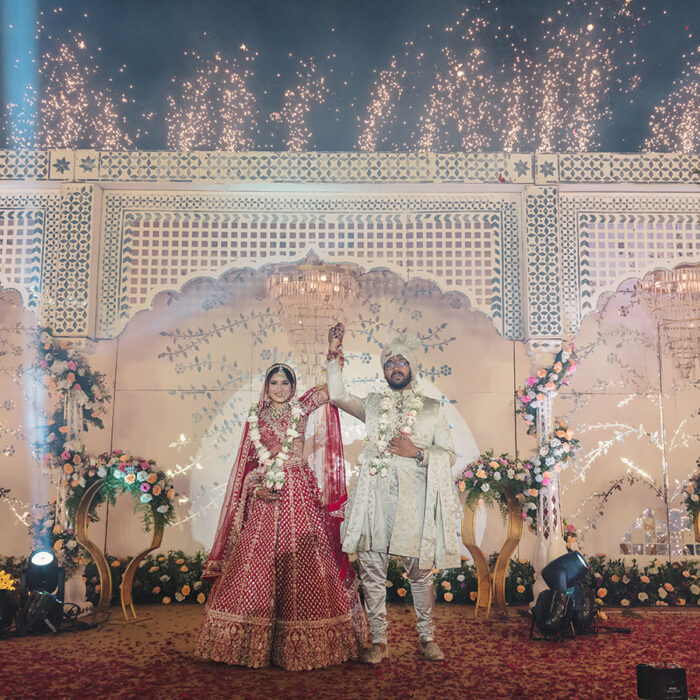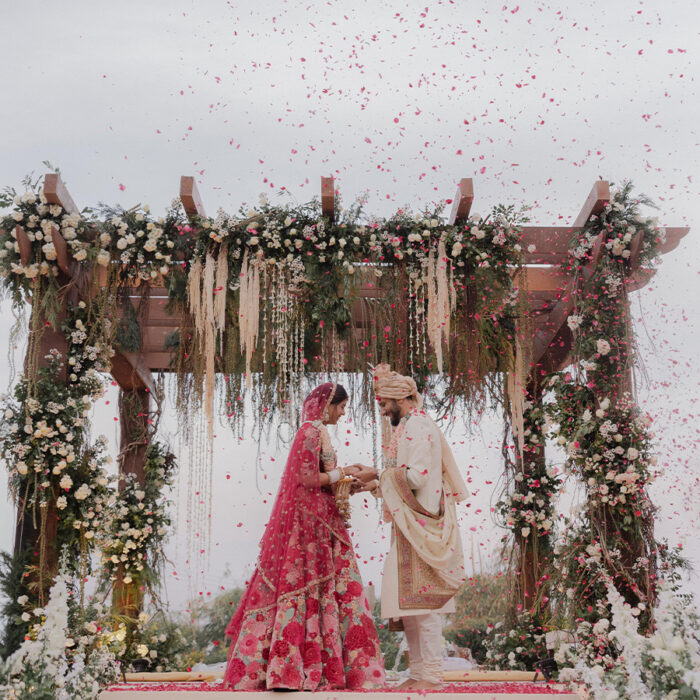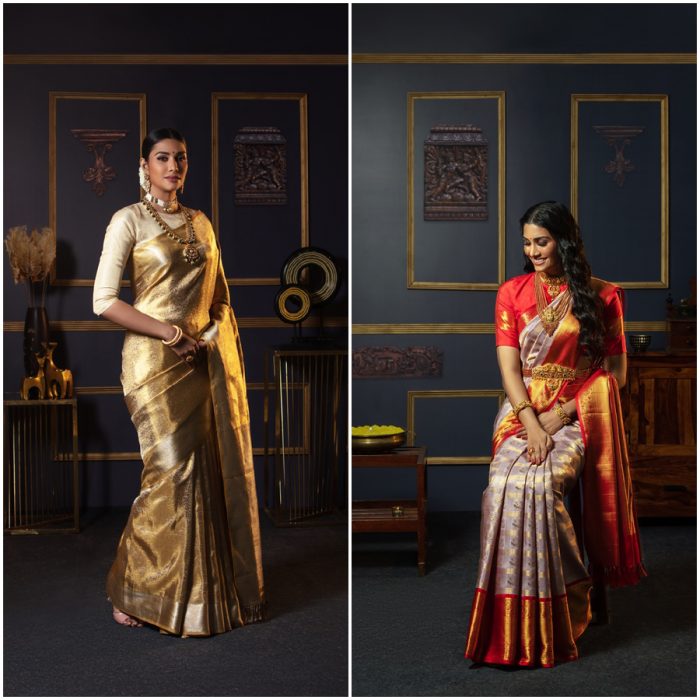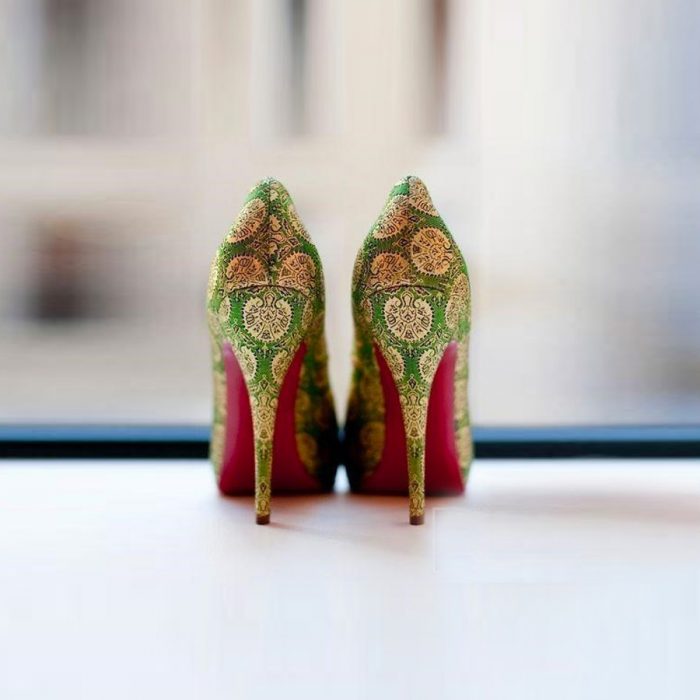Kashmiri Weddings: Customs and Traditions
Rituals, customs, style and more! Here's everything you need to know about Kashmiri weddings.
Much like the exceptional beauty of the region it is cradled in, Kashmiri weddings are an enchanting blend of traditions and a wonder to behold. From delightful vegetarian cuisine and unique family customs to the traditional attire worn by the bride and groom, attending a Kashmiri Pandit wedding is undoubtedly an experience you will cherish forever. Exploring the warmth and allure of Kashmiri wedding traditions, we bring you the next installment of the Wedding Tradition Series: a kaleidoscopic guide to different regional cultures, spanning rituals, customs, fashion and more.

Photo Courtesy: Let’s Get Wed
As more couples from different cultures or even countries tie the knot, they desire a beautiful blend of celebrations that will stay with them and their guests forever. Whether you are a bride or a groom-to-be planning your wedding, or a guest invited to a friend’s big day, planning for a celebration that is new to you can often get stressful. This wedding tradition series is aimed to answer all your questions about ceremonies and the meaning behind them, how to dress for different functions and unique aspects of the experience to embrace, traversing one culture at a time.
Welcome to the tranquil traditions of Kashmiri weddings!
Wedding Functions
Kasamdry
The formal commitment ceremony in true Kashmiri tradition, Kasamdry is held at a temple. The families meet and exchange flowers and offer puja to acknowledge the match, after which they enjoy a traditional vegetarian meal prepared by the bride’s family. The aunts of both the bride and the groom respectively prepare a traditional rich pudding or kheer called ‘Var’ that is distributed amongst family and friends.
Gandun
Once the priest sets the date, a formal engagement ceremony is held with lavish festivities, sumptuous food, exchange of rings and gifts. The bride’s family sends an elaborate trousseau consisting of money, fruits, misri and other things to the groom’s house.
Photo Courtesy: Let’s Get Wed
Livun
An age old tradition from the time people used to live in mud huts, Livun ceremony is for a symbolic cleaning of the bride and groom’s house done thoroughly before the wedding. The ceremony is performed by married women of each family, who are then often gifted with money or clothes.
Wuri
The family cook or the waza installs a brick and mud oven called wuri in the backyard where all the food for the wedding is to be cooked. Traditionally, meat wasn’t consumed in Kashmiri Pandit weddings, but in modern weddings, non-vegetarian dishes are often arranged from a hotel or caterers at the venue.
Wanvun
An evening of music and merriment is hosted at the bride and groom’s houses respectively, where their friends and families sing old folk songs, dance and play the acoustic instrument of tumbak. Guests are served with Noon or Sheer Chai, a salted pink tea.
Photo Courtesy: The Wedding Conteurs

Photo Courtesy: Let’s Get Wed
Krool Kharun
The traditional decoration of the gate of the house with traditional colors at both homes is done by the father’s sister, as the family sings and dances in high spirits.
Maenziraat
On the day before the wedding, the bride-to-be is pampered with an elaborate bath, where her feet are washed by her maternal aunt, after which her eldest aunt puts henna on her hands and feet. The other women of her family also put on henna, and enjoy a lovely meal made by the waza. Even the groom is applied a little henna for good luck in a smaller function at his home. More affluent, modern weddings often see a bigger arrangement with professional musicians and entertainment.

Photo Courtesy: Let’s Get Wed

Photo Courtesy: Let’s Get Wed
Photo Courtesy: Sona Sachdeva Photography
Phoolon ka Gehna and Snazaroo
The groom’s family send’s beautiful jewellery made of flowers to the bride’s home for her to wear on the morning of the wedding, along with cosmetics, sindoor, mirror, gold and silver covered betel leaf called Snazaroo.

Photo Courtesy: Let’s Get Wed
Divagon
This ceremony marks the transition of the young bride and groom from Brahmacharya Ashram (bachelorhood) to Garhasthya Ashram (married life), by holding a separate ritual for each of them in their respective homes. The bride and groom, along with their families observe a fast before they offer prayers to Goddess Parvati and Lord Shiva respectively, in a pooja by the priest as per Vedic rituals. The utensils and jewellery given to the bride are kept in front of the holy fire to bless them.
Photo Courtesy: The Wedding Conteurs
Kanisharan
Technically part of the Divagaon ceremony, for the Kanisharan, the bride and groom are bathed in a holy mix of water, milk, curd and rice, as flowers are showered on them. They then change into new, traditional clothes. The bride is gifted with jewellery and utensils by her parents, which are included in the Divagaon puja as mentioned.
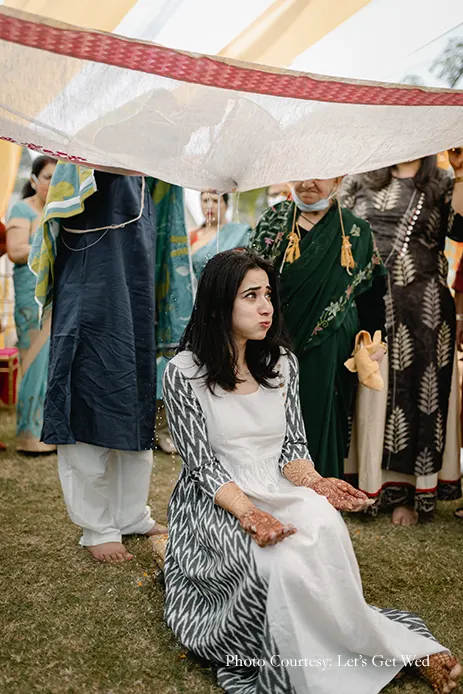
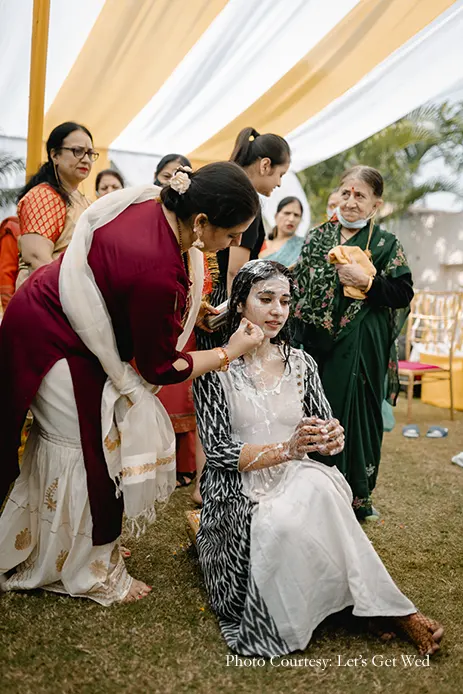
Photo Courtesy: Let’s Get Wed
Photo Courtesy: Let’s Get Wed
Khir Tabche
For this function, the women relatives who have helped in the wedding preparations are invited for a traditional meal, followed by kheer (rice custard) made in a Tabche, a traditional pot handmade in the kiln. In contemporary weddings, this is often replaced by modern utensils for the ceremony.
Duribat
The maternal relatives of both the bride and the groom are invited for lunch to their respective homes. They are welcomed with milk and kahwa followed by a traditional Kashmiri meal including dum aloo, yakhni, nadroo, etc. Everyone exchanges gifts, and the immediate relatives are presented with a ‘tarang’, a traditional Kashmiri head dress for the wedding.
Baraat
The groom prepares to leave for the bride’s home or the wedding venue with his family, and a female member from their side, touches a plate of rice and money to the groom’s left shoulder. He sets off on a mare carrying a sword, along with his baraat. They are welcomed by the bride’s family to the sound of conch shells, and the fathers of both sides exchange nutmeg, a symbol of lifelong friendship.
Lagan
The nuptials are carried out with all traditional Vedic rituals. The priest performs a mandap puja after which the groom enters the mandap, while the bride is brought in carried by her maternal uncle. The couple is covered under fabric and they see each other reflected in a mirror underneath. The father of the bride then performs the kanyadaan, after which the groom holds the bride’s hand for the remaining rituals, bound together by a special cloth called athwas. Their foreheads are tied with a golden thread called mananmal. They then proceed to take their seven pheras and peform the saptapadi, concluding the wedding.

Photo Courtesy: Let’s Get Wed
Photo Courtesy: Let’s Get Wed
Photos Courtesy: Sona Sachdeva Photography
Posh Puza
Marking the end of the wedding, the couple is seated with a red cloth over their heads. Their loved ones shower them with flowers (posh) as the priest recites mantras directed towards them as a couple, as well as individually. By performing this, the couple is worshipped as an incarnation of Lord Shiva and Goddess Parvati.
Photo Courtesy: Sona Sachdeva Photography
Vidaai
As the couple prepares to leave the bride’s home after the wedding, they are made to stand on a wooden pedestal known as the Vyoog by the eldest woman in the bride’s family. She offers them nabad or rice thrice and kisses them on the forehead. The bride bids a tearful goodbye to her family, throwing a handful of raw rice over her shoulder in the direction of the house. She carries some more raw rice to be scattered over the doorstep of her husband’s home.

Photo Courtesy: Let’s Get Wed
Satraat
The newly-wed couple visits the bride’s family for the first time after the wedding, accompanied by a few children. They are treated to a grand meal, clothes and other gifts.
Photo Courtesy: Sona Sachdeva Photography
Phirlath
The bride’s parents visit the groom’s home laden with gifts, and are welcomed with a sumptuous feast.
Roth Khabar
On a Tuesday or Saturday following the wedding, someone from the bride’s home is sent over with a ceremonial cake, and the bride returns to her paternal home with them as a custom.
Ghar Atchum
The final formal function marking the finale of the wedding celebrations, Ghar Atchum is the reception hosted by the bride’s family. This is the one event where non vegetarian delicacies may be served.
Things you are sure to see in a Kashmiri Wedding
While all North-Indian Hindu weddings share common cultural and ritual nuances, there are some quintessentially Kashmiri moments that one absolutely cannot miss at a wedding.
Divagon
The ritual marks the transition of the bride and groom from bachelorhood to married life, and includes a unique ritual of the bride donning a dejhoor roped in a red thread through her inner ear piercing. This tells the world that she is now a married woman.

Photo Courtesy: Let’s Get Wed
Lagan
The wedding ceremony includes a ritual that is full of enjoyment and excitement, in which the bride and groom look at each other’s faces for the first time through a reflection in the mirror. How charming is that?
Fashion tips to immerse in the culture
Decadent hues
Ideal for weddings held in Kashmir or during the winter, embrace the opportunity to adorn decadent, rich hues in your lehengas, sarees or other outfits.
Velvet and silks
Festive, yet warm, velvet and rich silks are your best friends for a wedding in Kashmir to look fabulous without freezing. Dress it up with exquisite gold jewellery.
Intricate embroidery
Add to the richness of your wedding wardrobe with intricate gold embroidery.
To start planning your wedding, click here.
